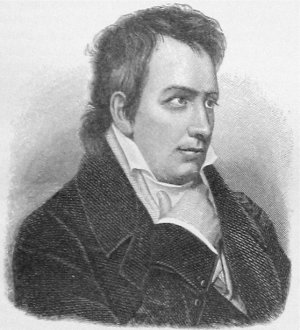Der blonde Eckbert
Our serious game interpretation of Ludwig Tiecks Der blonde Eckbert (English: Fair-Haired Eckbert) introduces players to the eponymous fairy tale using audiovisual storytelling and a runner game and thereby aims toward motivating a younger audience to deal with such heritage assets.
Background Story
Ludwig Tieck’s Der blonde Eckbert, published 1797, is a groundbreaking work for early German Romanticism. It is labeled as a "Kunstmärchen", an artificial fairy tale, that combines elements of a novella and a traditional fairy tale. As such, it centers on the knight Eckbert and his wife Bertha who are stalked by a miraculous old woman. Tieck creates a multitudinousness of different equally important readings by frequently mixing and combining realistic and fictional elements. That way Der blonde Eckbert addresses uncertainty, subjectivity, confusion and the unease, that the story triggers within the recipients, as well as the deconstruction of the belief in a singular, correct interpretation. Thus, due to the narrative unreliability, Eckberts madness virtually crosses over to the recipient.
Our Serious Game Approach
Our implementation is available in English and German language (see below) and features the following components:
Audiovisual Storytelling
The original text is presented in cutscenes enhanced by watercolor paintings and mood-accompanying audios.
Story-Connected Game Design
The runner games design is based on the stories main theme of the protagonists fleeing from their fears.
Didactical Elements
Gameplay elements pick up on narrative unrealiabilty and introduce possible interpretations.
Long-Term Motivation
The game includes 24 individually unlockable achievements as well as an endless mode to keep players motivated to play it longer and thereby dive into the story and its interpreations even further.
Get the Game
Windows-Versions
https://digital-humanities.uni-tuebingen.de/eckbert/eckbert_de.zip (German)
https://digital-humanities.uni-tuebingen.de/eckbert/eckbert_en.zip (English)
Linux-Versions
https://digital-humanities.uni-tuebingen.de/eckbert/eckbert_linux_de.zip (German)
https://digital-humanities.uni-tuebingen.de/eckbert/eckbert_linux_en.zip (English)






